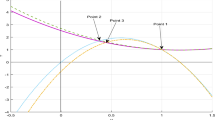Abstract
The diffraction of a shock wave over a stationary body is a problem of interest associated with the starting of shock tubes and expansion tubes which are well suited to studies of hypersonic flows. However, these facilities are characterized by very short test times. The transient parameters during the establishment of the detached bow shock in such impulsive facilities are important for both data processing and experimental design. In the present study, numerical simulations are conducted to investigate the diffraction of a normal shock wave over a sphere and the subsequent transient phenomena in a viscous perfect-gas flow field. The incident shock Mach number ranges from 3 to 5 with a specific heat ratio of 1.4. Based on the theoretical description of the reflected shock position during bow shock formation, approximate solutions for the time histories of the stagnation-point heat flux are also derived. The analytical and numerical results agree well. The results show that the stagnation-point pressure and heat flux approach their steady-state values much more rapidly than the shock detachment distance does.







Similar content being viewed by others
References
Mohammadiun, H., Rahimi, A.B.: Stagnation-point flow and heat transfer of a viscous, compressible fluid on a cylinder. J. Thermophys. Heat Transf. 26, 494–502 (2012). https://doi.org/10.2514/1.T3833
Wang, Z.H., Bao, L., Tong, B.G.: Variation character of stagnation point heat flux for hypersonic pointed bodies from continuum to rarefied flow states and its bridge function study. Sci. China Ser. G 52, 2007–2015 (2009). https://doi.org/10.1007/s11433-009-0226-7
Miles, J.W., Mirels, H., Wang, H.E.: Time required for establishing detached bow shock. AIAA J. 4, 1127–1128 (1966). https://doi.org/10.2514/3.3633
Anderson, G.F.: Real gas effects on the time required for establishing a detached bow shock. AIAA J. 5, 366–367 (1967). https://doi.org/10.2514/3.3981
Moran, J.P., Moorhem, W.K.: Diffraction of a plane shock by an analytic blunt body. J. Fluid Mech. 38, 127–136 (1969). https://doi.org/10.1017/S0022112069000085
Barnwell, R.W.: Numerical results for the diffraction of a normal shock wave by a sphere and for the subsequent transient flow. NASA TR R-268 (1967)
Miller, C.G., Moore, J.A.: Flow-establishment times for blunt bodies in an expansion tube. AIAA J. 13, 1676–1678 (1975). https://doi.org/10.2514/3.7048
Patz, G.: Formation of bow waves around blunt bodies in the flow behind a moving shock. Acta Mech. 32, 89–100 (1979). https://doi.org/10.1007/BF01176136
Li, J.P., Chen, H., Zhang, S.Z., Zhang, X.Y., Yu, H.R.: On the response of coaxial surface thermocouples for transient aerodynamic heating measurements. Exp. Therm. Fluid Sci. 86, 141–148 (2017). https://doi.org/10.1016/j.expthermflusci.2017.04.011
Collen, P.L., Doherty, L.J., McGilvray, M., Naved, I., Morgan, R.G., Hermann, D.E.: Commissioning of the T6 Stalker tunnel. AIAA Scitech 2019 Forum, San Diego, CA, AIAA Paper 2019-1941 (2019). https://doi.org/10.2514/6.2019-1941
Gildfind, D.E., James, C.M., Toniato, P., Morgan, R.G.: Performance considerations for expansion tube operation with a shock-heated secondary driver. J. Fluid Mech. 777, 364–407 (2015). https://doi.org/10.1017/jfm.2015.349
McGilvray, M., Morgan, R.G., Jacobs, P.A.: Scramjet experiments in an expansion tunnel: evaluated using a quasi-steady analysis technique. AIAA J. 48, 1635–1646 (2010). https://doi.org/10.2514/1.J050024
Candler, G.V., Subbareddy, P.K., Brock, J.M.: Advances in computational fluid dynamics methods for hypersonic flows. J. Spacecr. Rockets 52, 17–28 (2015). https://doi.org/10.2514/1.A33023
Sun, Q.H., Zhu, H.Y., Wang, G., Fang, J.: Effects of mesh resolution on hypersonic heating prediction. Theor. Appl. Mech. Lett. 1, 37–40 (2011). https://doi.org/10.1063/2.1102201
Li, X.D., Hu, Z.M., Jiang, Z.L.: Numerical investigation on the thermal protection mechanism for blunt body with forward-facing cavity. Sci. China Technol. Sci. 59, 1–10 (2016). https://doi.org/10.1007/s11431-016-6015-4
Kim, K.H., Kim, C., Rho, O.H.: Methods for the accurate computations of hypersonic flows: I. AUSMPW+ scheme. J. Comput. Phys. 174, 38–80 (2001). https://doi.org/10.1006/jcph.2001.6873
Kitamura, K., Shima, E., Nakamura, Y., Roe, P.L.: Evaluation of Euler flux for hypersonic heating computations. AIAA J. 48, 763–776 (2001). https://doi.org/10.2514/1.41605
Jameson, A., Yoon, S.: Lower-upper implicit schemes with multiple grids for the Euler equations. AIAA J. 25, 929–935 (1987). https://doi.org/10.2514/3.9724
Wang, Q., Li, J.P., Zhao, W., Jiang, Z.L.: Influence of thermal sensor installation on measuring accuracy at stagnation points. J. Thermophys. Heat Transf. 31, 318–323 (2017). https://doi.org/10.2514/1.T4971
Billig, F.S.: Shock-wave shapes around spherical and cylindrical nosed bodies. J. Spacecr. Rockets 4, 822–823 (1967). https://doi.org/10.2514/3.28969
Fay, J., Riddell, F.: Theory of stagnation point heat transfer in dissociated air. J. Aeronaut. Sci. 25, 73–85 (1958). https://doi.org/10.2514/8.7517
Holman, J.P.: Heat Transfer, 10th edn. McGraw-Hill, New York (2010)
Wang, Q., Olivier, H., Einhoff, J., Li, J.P., Zhao, W.: Influence of test model material on the accuracy of transient heat transfer measurements in impulse facilities. Exp. Therm. Fluid Sci. 104, 59–66 (2019). https://doi.org/10.1016/j.expthermflusci.2019.02.013
Acknowledgements
This work was supported by the National Natural Science Foundation of China (Grant Nos. 11402275, 11472280, and 11532014).
Author information
Authors and Affiliations
Corresponding author
Additional information
Communicated by K. Hannemann.
Publisher's Note
Springer Nature remains neutral with regard to jurisdictional claims in published maps and institutional affiliations.
Rights and permissions
About this article
Cite this article
Wang, Q., Li, J.P., Luo, K. et al. Evolution of heat transfer at the stagnation point during the detached bow shock establishment. Shock Waves 31, 133–140 (2021). https://doi.org/10.1007/s00193-021-01007-9
Received:
Revised:
Accepted:
Published:
Issue Date:
DOI: https://doi.org/10.1007/s00193-021-01007-9




